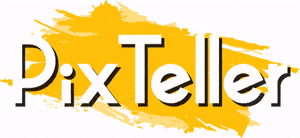Attracting Marketing Leadership: How Smart Job Posts Make a Difference

In today’s highly competitive business landscape, attracting top-tier marketing leaders is no longer just about brand prestige or salary. Organizations face unprecedented pressure to drive growth, maintain customer loyalty, and navigate rapidly evolving digital ecosystems. The Chief Marketing Officer or any equivalent leadership role is not merely a support figure but a strategic cornerstone in shaping a company’s future.
As expectations rise, companies can no longer afford to post generic job descriptions and hope the right candidate shows up. These roles demand specialized expertise, cross-functional collaboration, and a deep understanding of consumer behavior. It is essential for hiring teams to reflect that sophistication in the job post itself, presenting both the challenge and the opportunity in a way that resonates with seasoned marketing professionals.
Smart job posts serve as the first interaction a potential leader has with a company. They are not just listings; they function as strategic outreach tools. By failing to articulate the role's impact or scope, companies risk alienating qualified individuals or worse, hiring a candidate who underdelivers because the expectations were never clearly framed. This early misalignment can ripple into long-term organizational underperformance.
Clarity and Precision: The Cornerstones of Effective Job Posts

One of the most crucial aspects of an effective job post for marketing leadership is clarity. Candidates at the executive level are not simply reviewing titles and responsibilities; they are assessing whether the company has a firm grasp of its strategic priorities. A job description that leans too heavily on corporate buzzwords or vague phrases often signals internal confusion. In contrast, when a job post clearly outlines what the organization expects and how the role contributes to broader business goals, it immediately communicates credibility and seriousness.
Precision adds another layer of effectiveness. Rather than offering an exhaustive list of day-to-day duties, a more powerful approach is to focus on a small number of critical outcomes the role is expected to achieve. Whether that includes repositioning a brand, expanding market share, or building a performance marketing team, clearly defined objectives are what ultimately attract seasoned marketing leaders. They want to understand the scope of influence, key performance indicators, and how success will be measured in the first six to twelve months.
This attention to clarity and specificity is especially important when hiring for nontraditional roles like a fractional CMO. These executives often step in during pivotal moments such as product launches or leadership transitions. Since the role is typically short-term or part-time, the job post must clearly define scope, authority, and team integration. As part of a broader CMO job strategy, companies now use job posts to communicate intent and executive readiness in flexible marketing leadership roles.
Fractional CMOs: A Strategic Option for Flexibility and Expertise

In an era where agility is increasingly valued, many organizations are turning to fractional CMOs to fill gaps in marketing leadership without committing to a full-time executive hire. This model provides access to senior-level strategic guidance while maintaining flexibility in budget and scope. For companies undergoing transformation or needing specialized campaign execution, a fractional leader can offer a cost-effective and impactful solution. The RiseOpp fractional CMO agency exemplifies this approach, helping businesses tap into experienced marketing leadership without the overhead of traditional hiring.
Job postings designed to attract fractional CMOs require a different tone and structure than traditional full-time roles. They must clearly outline the project-based objectives, timelines, and expected deliverables. Additionally, these listings should clarify how the fractional role integrates with existing teams and what level of autonomy or decision-making authority it holds. Because fractional leaders often manage multiple engagements, clarity and transparency are essential to attract the right talent and ensure alignment from the outset.
The growing popularity of this approach reflects broader changes in how businesses think about leadership. Rather than building large in-house teams, many companies now prefer assembling a lean group of experts tailored to specific outcomes. Fractional CMOs bring tested experience and can hit the ground running, especially in industries where rapid go-to-market strategies or digital overhauls are in play. Crafting the right job post for this type of engagement is key to leveraging this model effectively and securing results quickly.
Defining Value Beyond Buzzwords

Job descriptions for marketing leadership roles often fall into the trap of using catchphrases like "visionary," "rockstar," or "growth hacker." While these terms may be well-intentioned, they rarely provide actionable insight into what the role actually entails. Top candidates are looking for substance over style. They want to know the real business problems they are being hired to solve and the authority they will have to solve them.
To differentiate a job post in a saturated market, companies must go beyond superficial language and describe the tangible value the role brings to the organization. This could include ownership of customer lifecycle metrics, integration with sales enablement strategies, or responsibility for global brand management. When the post explains how marketing supports broader company initiatives, it elevates the role’s stature and draws in candidates with a strategic mindset.
Furthermore, value should be communicated not just in what the company expects, but also in what it offers. Leadership candidates assess company culture, executive alignment, and resource commitment as much as they assess salary or title. If an organization offers access to innovation labs, cross-departmental collaboration, or leadership coaching, these should be highlighted. Such perks are often overlooked but can be deciding factors for experienced professionals evaluating multiple opportunities.
Tone and Messaging: Striking the Right Balance

Tone is often an underrated element of job postings, yet it plays a significant role in shaping perception. A job post that reads like a compliance document may signal a risk-averse or bureaucratic environment. On the other hand, overly casual language might suggest a lack of seriousness or maturity. For senior marketing roles, the tone should reflect both gravitas and opportunity.
The messaging should balance aspirational goals with grounded realities. While it is important to communicate a bold vision, it is equally important to be transparent about current challenges. Candidates appreciate honesty about what is not working or where the company is seeking transformation. This creates an atmosphere of trust and signals that the organization values authenticity.
Crafting the right tone also means being intentional about inclusivity. Language should invite a diverse range of candidates without relying on cultural shorthand or idioms that may not resonate globally. A thoughtful and neutral tone, combined with specific details, ensures that the job post is accessible to a wide and capable pool of applicants. This broadens the pipeline and enriches the candidate selection process.
The Role of Employer Branding in Attraction

While the job post itself is vital, it does not exist in a vacuum. It is one part of a broader employer brand narrative that either reinforces or contradicts what the candidate sees in the post. Marketing leaders are especially attuned to brand consistency, and any misalignment between the job description and the public-facing company identity can raise red flags.
Strong employer branding can amplify the impact of a well-written job post. It offers context, history, and culture that cannot always be conveyed in a single document. Companies that regularly publish thought leadership, maintain an active LinkedIn presence, and foster a compelling Glassdoor profile are more likely to catch the attention of top-tier talent. For marketing executives, alignment between internal culture and external messaging is not just appealing, it is essential.
Organizations that invest in employer branding find that their job posts perform better in terms of quality applicants and time-to-hire. They also reduce the likelihood of mismatched hires, as candidates come in with a more accurate understanding of the work environment. Smart hiring teams ensure their job posts are an extension of a larger brand narrative that is consistently reinforced at every candidate touchpoint.
Optimizing for Discovery and Engagement

A strong job post means little if it is not seen. Optimization for digital discovery is often an afterthought, but it should be integral to the job posting process. Using the right keywords ensures the listing is surfaced by job boards, search engines, and internal applicant tracking systems. This is especially important for leadership roles, which may not generate as many applications as mid-level positions.
In addition to keywords, formatting plays a role in engagement. Using clear subheadings, bullet points for qualifications, and concise summaries allows busy executives to scan efficiently and decide whether the opportunity is worth exploring. Avoiding dense blocks of text and including visual hierarchy increases the likelihood that a reader will stay engaged and absorb the content.
Moreover, interactive or multimedia enhancements can increase engagement. Embedding a short video from the CEO or including a link to a recent investor update adds a layer of credibility and context. These elements make the job post feel dynamic and reflective of a forward-thinking organization. For marketing leaders, who often consume and evaluate content professionally, this attention to presentation speaks volumes about the company’s approach to communication and innovation.
Feedback Loops and Continuous Improvement
Job posts for leadership roles should not be static documents. Companies that treat them as living tools subject to iteration tend to perform better in attracting high-quality candidates. Regularly revisiting the language, scope, and structure of the post based on candidate feedback and hiring outcomes allows for continuous refinement.
Feedback can be gathered from internal stakeholders, including hiring managers and current marketing leaders who can provide insight into whether the role is accurately portrayed. Equally valuable is the feedback from candidates who declined to move forward. Understanding their hesitation can illuminate gaps in messaging or misaligned expectations that need to be addressed.
Additionally, performance metrics such as application rates, interview conversions, and time-to-hire offer quantitative data to inform revisions. By adopting an agile mindset and applying the same level of rigor to job posts as to other strategic initiatives, companies demonstrate their commitment to excellence in both hiring and leadership development. This mindset fosters long-term talent success and a more resilient organizational structure.
Until next time, Be creative! - Pix'sTory
Recommended posts
-

Best Ways to Increase Subscribers and Views on YouTube
Read More › -

How Ethical AI Is Changing Marketing and Content Creation
Read More › -

What Big Brands Lack in Digital Marketing?
Read More › -

Improve Your Online Course in these 6 Steps
Read More › -

5 Graphic Design Trends Every Marketer Should Know in 2025
Read More › -

A Complete Guide to Using Video Content to Boost Email Marketing Campaign...
Read More ›
